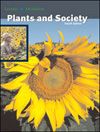 |
1 |  | 
1. Scientists agree that the practice of agriculture arose in Western Europe and spread to the rest of the world as man migrated from one region to another. |
|  | A) | True |
|  | B) | False |
 |
 |
2 |  | 
2. Which of the following is an example of a foraging society? |
|  | A) | a. Fertile Crescent |
|  | B) | b. Nile Valley |
|  | C) | c. Arctic Eskimos |
|  | D) | d. all of the above |
|  | E) | e. a and b are correct |
 |
 |
3 |  | 
3. Coprolites are fossilized fecal material that are studied to determine prehistoric diets. |
|  | A) | True |
|  | B) | False |
 |
 |
4 |  | 
4. Pollen, seeds, and fiber are the most common materials recovered from archaeological sites because |
|  | A) | a. lignin is not degraded by most microorganisms. |
|  | B) | b. they are stored in airtight jars. |
|  | C) | c. lipids fossilize more readily. |
|  | D) | d. all of the above |
|  | E) | e. b and c are correct. |
 |
 |
5 |  | 
5. The term Paleolithic refers to cultures, such as Neanderthal man, that existed during the Ice Age. |
|  | A) | True |
|  | B) | False |
 |
 |
6 |  | 
6. Proponents of the Agricultural Revolution Theory contend that agriculture was the discovery of a brilliant prehistoric sage. |
|  | A) | True |
|  | B) | False |
 |
 |
7 |  | 
7. The earliest documented sites of agricultural practices are located in |
|  | A) | a. the Polynesian Islands. |
|  | B) | b. the Andes Mountains. |
|  | C) | c. the Yangtze Valley. |
|  | D) | d. the Fertile Crescent. |
|  | E) | e. Mesoamerica. |
 |
 |
8 |  | 
8. Archaeological studies indicate that rice cultivation occurred in China approximately _______ years ago. |
|  | A) | a. 100,000 |
|  | B) | b. 5,000 |
|  | C) | c. 11,500 |
|  | D) | d. 2,000 |
|  | E) | e. 200,000 |
 |
 |
9 |  | 
9. The term Neolithic refers to __________. |
|  | A) | a. New Stone Age |
|  | B) | b. Plant stones |
|  | C) | c. Old Stone Age |
|  | D) | d. Agricultural Society |
|  | E) | e. a and d are correct |
 |
 |
10 |  | 
10. The archaeological site at Tehuacan Valley in Mexico is important because it helped scientists to date the domestication of _________. |
|  | A) | a. wheat |
|  | B) | b. corn |
|  | C) | c. foxtail millet |
|  | D) | d. rice |
|  | E) | e. none of the above |
 |
 |
11 |  | 
11. Which of the following evidences points that New Guinea was one of the primary centers of agriculture? |
|  | A) | a. presence of microfossils of taro |
|  | B) | b. higher percentage of banana phytoliths |
|  | C) | c. archeological remains of agricultural tools |
|  | D) | d. all of the above |
|  | E) | e. both a and c |
 |
 |
12 |  | 
12. The ensheathing husk of modern corn is an example of a trait that was naturally selected. |
|  | A) | True |
|  | B) | False |
 |
 |
13 |  | 
13. Early foragers naturally gathered and subsequently selected seeds from shattering seed heads. |
|  | A) | True |
|  | B) | False |
 |
 |
14 |  | 
14. Potatoes are native to ________, whereas coffee is native to ________. |
|  | A) | a. Ireland, Colombia |
|  | B) | b. North America, Greece |
|  | C) | c. Peru, Ethiopia |
|  | D) | d. South Africa, Argentina |
|  | E) | e. West Africa, Indonesia |
 |
 |
15 |  | 
15. Nikolai Vavilov’s contribution to botany was his theory that crops originated in places that have the greatest diversity of that crop. |
|  | A) | True |
|  | B) | False |
 |



 2006 McGraw-Hill Higher Education
2006 McGraw-Hill Higher Education